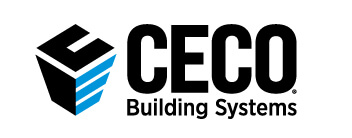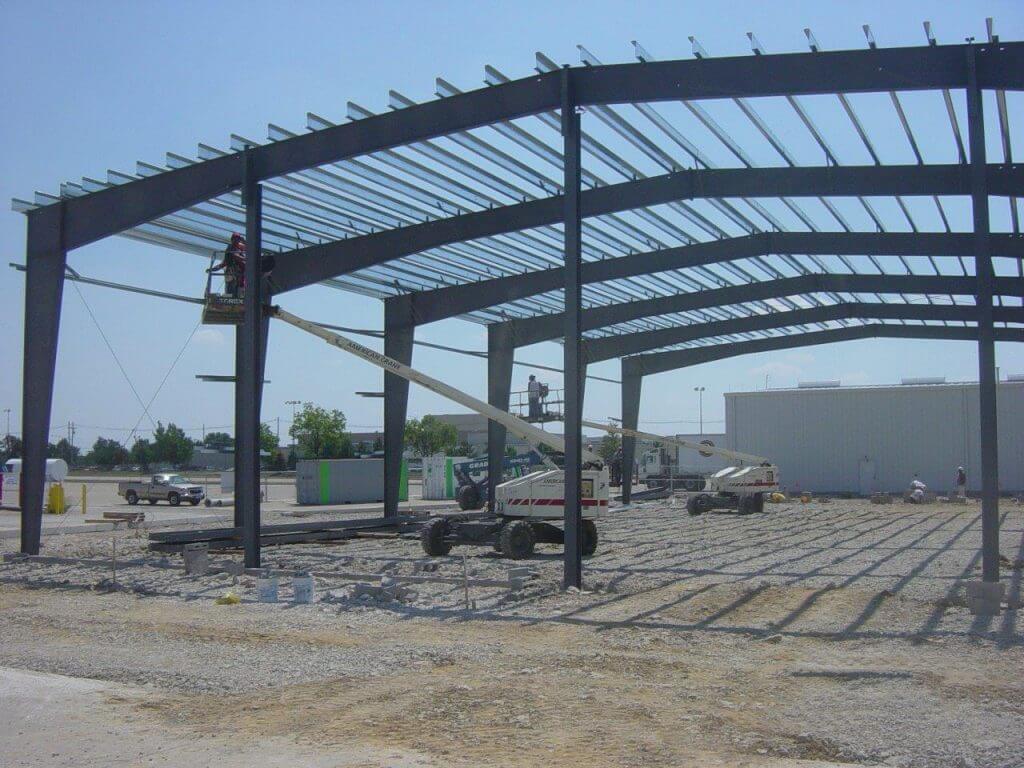Primary Building Frame Systems
Posted on September 12, 2019 by Rachel MercadoMetal buildings are most commonly built from steel structural systems that use “welded-up” members instead of traditional milled steel shapes (I-beams, etc.) to create a structural frame. The beauty of the welded-up framing is that it allows every building to be custom-engineered and put the strength of the steel in the places where it is needed most, while reducing it where it is not needed as much. This creates a very efficient system that saves on weight, cost, and time.
With this structural approach as a design basis, the typical cross-section view of the building frames creates the basic form and shape of the building. The frames are typically a combination of sidewall columns and roof rafters that span from one side of the building to the other, with interior columns added where necessary. Most commonly, the sidewall columns are tapered and the roof rafters may be as well. In order to optimize the design, there are three categories of primary building frame systems, each with different options, that design professionals can select from, as follows:
Interior Building Frames
The interior frames are the structural starting point for engineering the building. Depending on other design considerations, they can take several forms:
- Symmetrical Gables This is the common look of a metal building, with identical roof slopes on either side of a ridge line that can vary in slope from ½ : 12 to 12:12. This range of choice can create a variety of looks, and building heights as needed.
- Asymmetrical Gable Sometimes also referred to as a “lean-to” profile, each side of the roof line has its own slope and span to suit the needs of the building.
- Single-Slope As the name suggests, the roof line simply angles from one sidewall to the other without a ridge line.
All of these shapes can be created using any of the different span capabilities of the interior building frames:
- Clear-span designs use only the welded-up frames without any interior columns
- Multi-span designs allow for interior columns to be placed as needed. This is often the approach for wide buildings.
- Long-span designs use steel roof trusses as the rafters allowing for greater distance between interior supports – up to 70 feet. This is a preferred approach for very wide buildings or situations where interior columns need to be minimized. (See more about long-span solutions).
Note that for any of these choices, the basic sidewall column and roof rafter/truss approach is the same – the differences lie in the size and thickness of the steel and structural shapes plus attention to the connections of different members.
Building End Frames The end walls of a building only carry half of the load that the interior frames carry so they can be engineered accordingly. They may also have other design considerations for openings, connections to other building areas, etc. that need to be considered. Therefore, the frames of the end wall may look the same in overall profile as the interior frames, but in fact they function differently. Hence, any of the choices of interior frames can still be used, but the engineering will allow for lighter weight and thinner sections to be incorporated. The exception to this would be to allow for the future expansion of the building from one end or the other. In those cases, it would make sense to use a full load interior frame so it is already in place when the building expansion is undertaken.
Building Bracing In between the building frames, whatever type or size, bracing is needed to meet structural requirements related to shear loading, wind, or seismic conditions. Once again, the design is custom engineered and may include diaphragm bracing from attached sheathing whenever appropriate, but will often be supplemented and/or replaced with rod, angle, or cable “X” bracing. In some cases, cantilever columns, or portal frames, can be used where “X” bracing can’t be accommodated.
The information presented here is meant to be simply a review of the types and options in primary building framing systems for metal buildings. To find out more specifics about selecting the best framing system for your metal building, see the Ceco website or contact your local Ceco representative.


